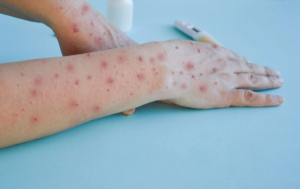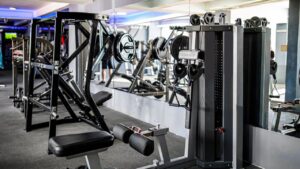Monkeypox, a viral zoonotic disease, has gained global attention in recent years due to outbreaks affecting multiple regions. While its symptoms are often less severe than smallpox, they can still significantly impact your health and overall fitness. For fitness enthusiasts, athletes, or anyone who has a regular workout routine, recovering from monkeypox can raise concerns about how and when to safely return to physical activity.
This detailed guide will walk you through everything you need to know about safely resuming your fitness routine after recovering from monkeypox. It covers the virus’s potential impact on your physical health, tips for a gradual return to exercise, nutrition strategies to aid recovery, and mental well-being practices to support your fitness goals.
1. Understanding Monkeypox and Its Impact on Physical Health
a) What is Monkeypox?
Monkeypox is caused by the monkeypox virus, which belongs to the same family as smallpox. The virus spreads through close contact with an infected individual, body fluids, respiratory droplets, or contaminated surfaces. Symptoms typically include fever, muscle aches, fatigue, and a characteristic rash that eventually forms scabs. In most cases, the illness lasts 2-4 weeks, but symptoms can range from mild to severe, depending on individual health factors.
b) How Does Monkeypox Affect Fitness Levels?
While monkeypox may not directly damage muscles or the cardiovascular system, it can have profound effects on your physical fitness. The fever, fatigue, and body aches associated with monkeypox can lead to significant muscle weakness and a decline in stamina. Additionally, the skin lesions and rashes may cause discomfort, which could hinder your ability to move freely during exercise.
In severe cases, the extended rest period required to recover from the virus can result in muscle atrophy (muscle loss) and reduced cardiovascular fitness. For athletes and individuals who maintain an active lifestyle, these setbacks can be challenging, making it critical to approach your post-recovery fitness routine carefully.
2. Key Considerations Before Returning to Exercise
Before jumping back into your usual workout routine, it’s important to consider several key factors to ensure a safe return:
a) Wait for Complete Symptom Resolution
Do not attempt to exercise while you still have active symptoms of monkeypox, such as fever, fatigue, or skin rashes. Pushing yourself too soon can lead to complications, prolong recovery, and increase the risk of spreading the virus to others. Most healthcare professionals recommend waiting until you have been symptom-free for at least 10-14 days before gradually reintroducing physical activity.
b) Consider Any Lingering Weakness
Even after recovering from monkeypox, you may still experience lingering fatigue or muscle weakness. Your energy levels might not be what they were before the infection, so it’s essential to be patient with yourself. Listen to your body and avoid rushing into high-intensity workouts. Instead, focus on gradual progress.
c) Consult a Healthcare Professional
Before resuming any form of exercise, consult your doctor to confirm that you’re medically cleared to begin working out again. If you experienced a severe case of monkeypox, your doctor may suggest additional recovery steps, such as physical therapy or monitoring for any lingering complications.
3. A Step-by-Step Guide to Safely Resuming Your Fitness Routine
Step 1: Start with Light Movement and Stretching
When you’re ready to get back to physical activity, start with gentle, low-impact exercises such as walking, yoga, or light stretching. These activities will help restore mobility, improve blood circulation, and reduce stiffness without placing too much strain on your body. Aim for short, 10-15 minute sessions to gauge how your body reacts.
Key activities:
- Walking: 15-20 minutes at a slow to moderate pace.
- Yoga: Focus on poses that promote flexibility and relaxation, such as Child’s Pose or Cat-Cow.
- Dynamic Stretching: Incorporate arm circles, hip rotations, and leg swings to loosen muscles.
Step 2: Incorporate Low-Intensity Cardio
As your energy improves, you can begin incorporating low-intensity cardio exercises, such as stationary cycling, swimming, or slow jogging. Start with short sessions of 20-30 minutes and monitor your heart rate and breathing to ensure that your body is coping well with the increased workload.
Low-intensity cardio options:
- Cycling: 20-30 minutes at a steady, comfortable pace.
- Swimming: 20 minutes of slow laps, focusing on maintaining steady breathing.
- Jogging: Begin with 15 minutes of slow jogging, increasing the duration gradually.
Step 3: Gradually Add Strength Training
Strength training is crucial for rebuilding muscle mass lost during your recovery period. However, it’s important to avoid lifting heavy weights or engaging in intense resistance training until your body has regained its full strength. Start with bodyweight exercises or light resistance bands before progressing to heavier weights.
Beginner strength exercises:
- Bodyweight squats: 2-3 sets of 10-12 repetitions.
- Push-ups (modified if necessary): 2 sets of 8-10 repetitions.
- Resistance band rows: 2 sets of 12-15 repetitions.
As your strength improves, you can gradually increase the weight and intensity of your workouts. Aim for 2-3 days of strength training per week, with rest days in between.
Step 4: Focus on Recovery and Rest
Rest is just as important as exercise when recovering from monkeypox. Your body needs time to heal and rebuild strength, so make sure to incorporate rest days into your workout schedule. Overtraining or returning to intense workouts too quickly can lead to setbacks, including injury or a relapse in symptoms.
4. Nutrition Strategies to Support Post-Monkeypox Recovery
Nutrition plays a crucial role in your recovery process. A well-balanced diet rich in essential vitamins and minerals will help boost your immune system, repair damaged tissues, and replenish lost energy.
a) Protein for Muscle Repair
Since muscle atrophy may have occurred during your illness, consuming enough protein is vital for repairing and rebuilding muscle tissue. Include lean protein sources such as chicken, fish, tofu, and legumes in your diet to support muscle recovery.
Examples of protein-rich foods:
- Grilled chicken breast.
- Salmon or other fatty fish.
- Eggs and egg whites.
- Quinoa and lentils.
b) Immune-Boosting Foods
Monkeypox recovery can benefit from nutrients that support your immune system, such as vitamin C, vitamin D, and zinc. Foods rich in antioxidants will help reduce inflammation and speed up the healing process.
Immune-boosting foods:
- Citrus fruits like oranges, grapefruits, and lemons.
- Leafy greens like spinach and kale.
- Almonds, which are high in vitamin E.
- Fortified cereals or fatty fish like salmon for vitamin D.
c) Hydration
Staying hydrated is essential for every stage of recovery. Dehydration can slow down the healing process, reduce exercise performance, and worsen fatigue. Aim to drink plenty of water throughout the day and replenish fluids lost during workouts.
5. Mental Health Considerations During Recovery
Recovering from monkeypox can take a toll on your mental well-being, especially if you’ve experienced isolation, fatigue, or setbacks in your fitness goals. It’s important to focus on mental resilience as part of your recovery process.
a) Mindfulness and Stress Management
Incorporating mindfulness practices like meditation or deep-breathing exercises can help you stay calm and focused during recovery. These techniques can reduce stress, enhance your mental clarity, and improve your mood.
b) Setting Realistic Expectations
It’s common to feel frustrated if you’re unable to return to your pre-infection fitness level right away. Set realistic, short-term fitness goals, and celebrate small progress milestones to keep your motivation high.
c) Social Support
Lean on friends, family, or online fitness communities for support during your recovery. Engaging with others who understand your journey can provide encouragement and accountability as you work to regain your fitness.
6. Preventing Future Infections and Staying Safe in the Gym
While monkeypox may not have widespread outbreaks in every region, practicing good hygiene and safety measures in shared fitness spaces is essential for preventing the spread of any contagious illness.
a) Hygiene Practices
- Disinfect gym equipment before and after use.
- Wash your hands frequently with soap and water, especially after handling gym equipment.
- Avoid touching your face while working out, particularly if you’ve touched shared surfaces.
b) Wear Appropriate Clothing
If you still have any residual rashes or lesions, cover them with appropriate clothing or bandages to prevent the potential spread of the virus. Avoid swimming pools or communal areas until all symptoms have completely cleared.
Conclusion: Returning to Fitness After Monkeypox Requires Patience and Care
Recovering from monkeypox is a unique challenge for anyone passionate about maintaining their fitness. By gradually reintroducing exercise, prioritizing nutrition, and focusing on both physical and mental well-being, you can safely regain your strength and stamina.
Patience is key—your body needs time to heal and rebuild. But with the right approach, you’ll be back to your pre-infection fitness level, or even stronger, before you know it.



